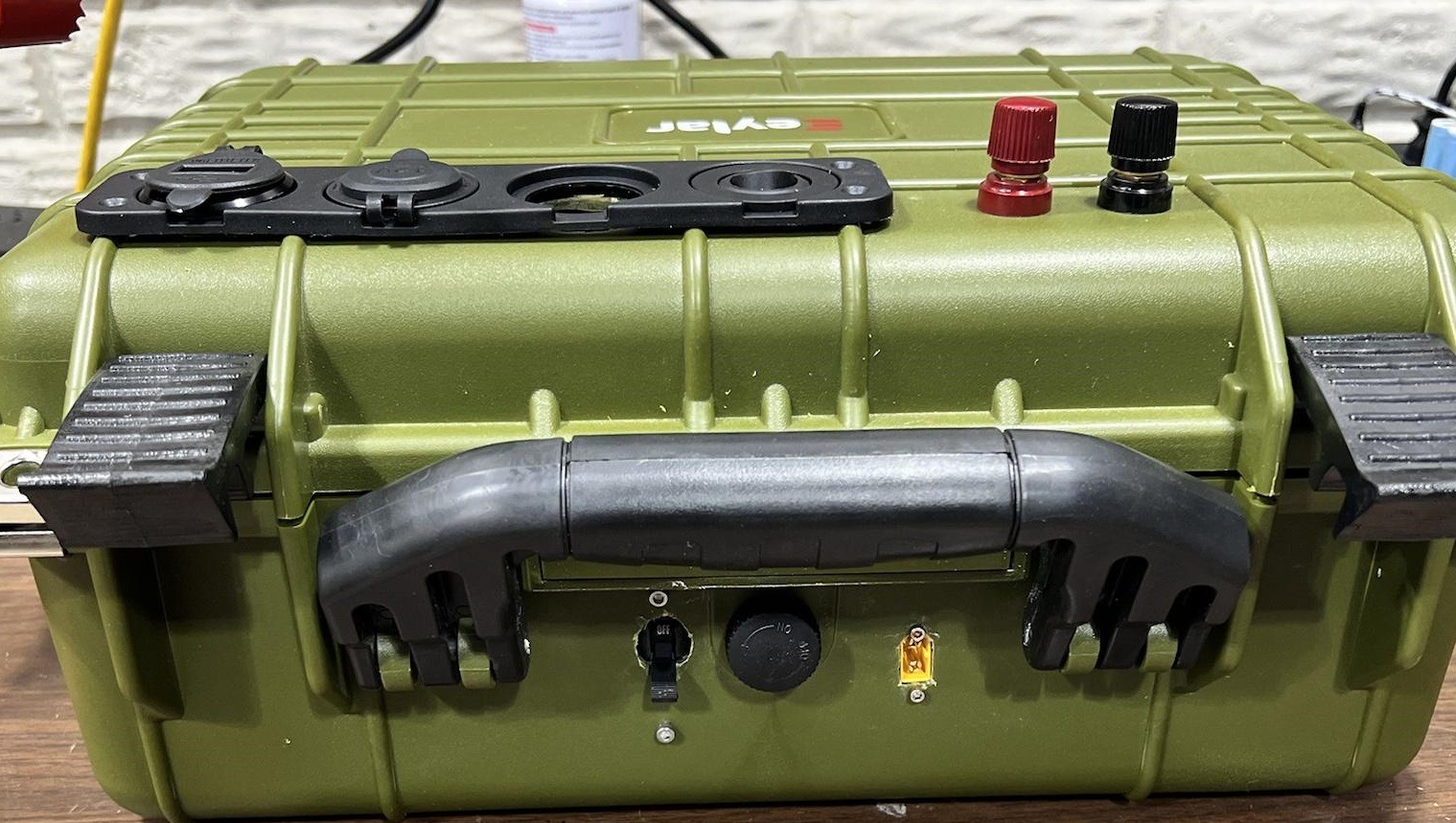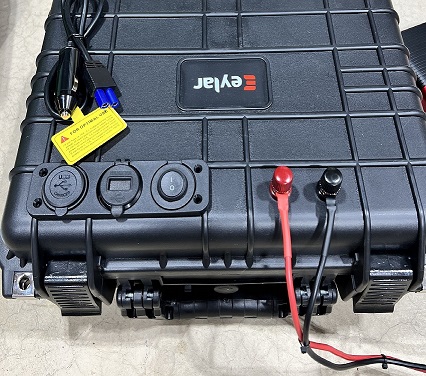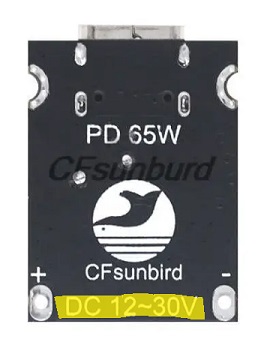
How To Plan A DIY Portable Power Pack/Station
Table of Contents
Are you wondering how to plan a portable power pack? It’s actually not all that hard of a thing to do, there are just some key aspects and basic ground rules that need to be considered first.
In this article, we will cover everything you need to know to build a portable power station (also known as a solar generator). For this article, we will assume that you already know how to build a lithium-ion battery. If you do not, then I highly recommend you check out this article, as it covers exactly that.
Also, this article will be about how to plan a portable power pack and not so much about how to build one. If you are looking for how to build a portable power pack, sign up for our email list we will be writing on it at a future date.
Why Build a Portable Power Station Yourself?
When researching the cost of solar generators and other portable power systems, one will find that most of them demand a hefty price. In fact, most small units cost somewhere between $300 to $500, while larger models can run anywhere between $500 to $1000 or even more. What's even worse is the fact that at this price range, portable power systems often do not provide the amount of power that the user needs.
In my experience, I have been able to build some DIY power stations for half the cost of over-the-counter models. They also tend to have all the features that I need and want and not a bunch of things that I will never use. This website actually came to be because of building a DIT power station for myself and a friend!! You can see two of my now many builds here.
Components to Plan A Portable Power Station
The definition of a portable power pack is rather broad, and the term solar generators is even more vague. There are a few key aspects that I believe every portable power pack should have.
USB Ports
It’s 2023, so USB ports are super important. There are simply too many devices that are charged or powered over USB for USB ports to not be included in a portable power station. The good news is that there are plenty of great USB power modules to choose from on Amazon. If you are looking for something even smaller than a power station you might want to check out our guide on building a DIY power bank.
LED flashlight
While it's true that portable power stations are useful for things like camping, they are much more useful for emergencies. Whether you are on a camping trip or enduring an emergency, when the sun starts to go down it begins to feel a lot like the 13th century. So, it’s important for your portable power pack to have some sort of built-in lighting.
Inverter
If you plan on needing AC power you will need an inverter. The inverter voltage range will need to be able to operate within the battery packs voltage range to get the most out of it. Always oversize your inverter, if you will need 500w of AC power get a 600w inverter.
Direct Power Output
The batteries in your portable power pack can often supply much more power than any regulator that would attach to it. There are plenty of circumstances in which it's useful to have a direct connection to the battery cells inside your portable power pack.
Short Circuit & Overcurrent Protection
These things are especially important if you have a direct power output in your portable power pack. The last thing you want to do is accidentally short something out and render your only source of power completely useless. The great news, in this regard, is that overcurrent and short circuit protection are basic features that are built into every BMS. So, you don't even have to add an additional module to get these benefits. Its crucial that you pick the right BMS for your project think of it as the brain of your power station.
And obviously...a Battery
We will go into more detail about the battery below.
The great news is that you can build a really nice portable power system yourself! Not only does it save you money, but it will build a skill that will be useful for the rest of your life. Also, there is a great sense of accomplishment when building anything, especially something that you will use all the time.
What Voltage Battery To Use For Portable Power Pack
A portable power pack is only as useful as the regulators you have attached to it. While it's nice to have a direct power output, that is not what you are going to be using most of the time. Instead, most of the time you will be using USB ports or a standard 12V output to run 12V devices. It's also crucial that you select the right capacity size for the power station.
Among many other things, the efficiency of a given regulator is a function of the difference between the regulator's input voltage and output voltage. With all else being equal, a regulator will always be more efficient if the input and output voltages are closer together rather than far apart.
Most devices that you are going to want to run from your portable power pack are going to be 12-volt devices. Things like small inverters, LED room lighting, and many other devices are made to run on 12 volts.
USB A outputs 5V in the overwhelming majority of situations. USB QC 3.0 (QuickCharge) compatible devices can negotiate with smart USB power modules and they can provide 9 or even 12 volts to a device after an automatic voltage negotiation process.
USB C PD (Power Delivery) is a bit different. USB C PD can supply either 5, 9, 12, 15, or 20 volts. It can also supply up to 100W of power depending on the device you have attached to it.
Most power regulator modules and all USB regulator modules rely on buck converter technology. That means that they cannot increase the voltage, they can only reduce it.
This means that in order to be able to supply the desired output voltage, you are going to need to have an input voltage just above your highest possible output voltage. The reason it needs to be slightly higher than your output voltage is that nothing is 100 percent efficient. There will always be a small voltage drop across a regulator.
If you are not interested in running USB PD devices at the max voltage of 20V (laptops, other battery banks, etc) then you can go with a simple 4S (16V) or 5S (18V) battery pack.
If, however, you want to build a portable power pack that has full USB C PD support, you will have to use a battery pack that has a voltage that never drops below 21.5 volts. With lithium-ion batteries, it's not as straightforward to do.
The closest fit for USB PD is a 7S configuration (24V). In the case of a 7S lithium-ion battery, the max charge voltage is 29.4 volts, but the dead voltage is about 21 volts. so any USB PD module you choose you need to make sure it can operate within that voltage range.
Doing this will ensure that your portable power pack is able to provide the full USB PD specification throughout its entire capacity range.
So make sure when you decide the voltage of the battery pack you are building you consider the voltage range of the devices you are powering.
Parts Needed To Build A Portable Power Station
- Battery pack - 4S or 5S if you don’t need the full USB PD output spec. 7S if you do, but you will have to put a boost converter between your battery pack and the USB PD modules if you plan on using 20V USB C for the entire capacity of the battery.
- Charger - You must use a proper constant current battery charger for your portable power pack. Do not rely on the BMS to ‘handle things’ and cut off charging and regulate current. If you do, then you will not only not get all of the performance you expect from your portable power pack, but it will also damage it.
- Power Regulators - You will need step-down converters and USB power regulator modules to adapt the main battery voltage slope into something more stable and standardized.
- Inverter - On my builds, I use a 7s configuration and get a 24v inverter. Most USB devices can handle up to 30v. This allows me to now have any buck or boost converters in my builds.
- Casing - While it will work, it's not very practical to run all of these components loose on a table or the ground. So, consider what kind of package you could put it in. Ammo cases are pretty popular to build portable power packs out of, but I feel like it's better to build a battery pack out of something less conductive. So, look for a camera gear boxes or other plastic casing or project box to put your portable power pack components in.
- Ports and Outlets - Many devices rely on the standard cigarette lighter plugs that are commonly available in automobiles. So, it's a good idea to put at least one of these sockets on your portable power pack.
Conclusion
When it comes to planning a portable power pack, there are a lot of options. The information in this article is more or less the best effort at providing a general overview of what’s needed to make one of these extremely useful devices. Thanks for reading!




